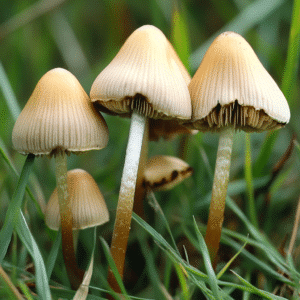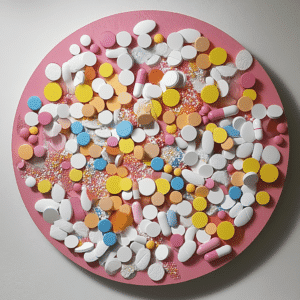Methamphetamine, commonly known as meth, continues to wreak havoc across countless communities, leaving broken families and lost futures in its wake. An alarming number of young individuals and adults alike have fallen prey to its dangerously addictive nature. As we dive deep into meth addiction, it becomes crucial to understand not only its dangers but also its devastating, long-lasting effects. This sobering reality reminds us of the need for comprehensive support systems like those offered by Mothers Against addiction.
Understanding Meth Addiction: A Harrowing Epidemic
The Science Behind Meth Addiction
Methamphetamine is a powerful central nervous system stimulant that poses significant risks due to its highly addictive properties. The chemical structure of meth enhances the release of dopamine in the brain, leading to extreme euphoria. This artificially induced dopamine surge causes the brain to associate meth use with pleasure, rapidly triggering addiction. Chronic users often experience irreversible changes in brain function, including memory loss and impaired decision-making abilities.
| Aspect | Description |
| Substance | Methamphetamine, commonly known as meth. |
| Forms | Powder, crystals (crystal meth), pills. |
| Street Names | Ice, Glass, Crank, Chalk, Crystal, Tweak. |
| Methods of Use | Smoking, snorting, injecting, swallowing (pill form). |
| Initial Effects | Euphoria, increased energy, heightened alertness, decreased appetite, elevated mood. |
| Duration of Effects | 6-12 hours, with a potential “high” lasting up to a full day. |
| Short-term Health Risks | Increased heart rate and blood pressure, hyperthermia, insomnia, loss of appetite, erratic behavior, paranoia. |
| Long-term Health Risks | Addiction, severe dental issues (“meth mouth”), weight loss, skin sores, increased risk of infectious diseases (HIV, hepatitis), cognitive dysfunction, anxiety, violent behavior, paranoia, hallucinations. |
| Withdrawal Symptoms | Fatigue, depression, increased appetite, anxiety, intense drug cravings. |
| Treatment Options | Behavioral therapies (Cognitive Behavioral Therapy – CBT), contingency management, support groups (12-step programs like Narcotics Anonymous), medication-assisted treatment (though no specific medication for meth). |
| Impact on Families | Emotional distress, financial strain, breakdown of family structure, neglect or abuse of children, legal issues. |
| Support Resources | Counseling services, rehabilitation centers, family support groups, educational resources, emergency helplines. |
| Prevention Strategies | Education on substance abuse, early intervention programs, community outreach, family-based prevention programs, promoting healthy lifestyle alternatives. |
Short-Term Dangers of Meth Addiction
Immediate Psychological and Physiological Effects
Meth induces a rapid onset of various physiological and psychological effects. Within minutes, users often experience increased wakefulness, decreased appetite, and an exaggerated sense of confidence. However, these short-lived highs mask immediate dangers:
– Cardiovascular Complications: Surge in heart rate and blood pressure leading to potential heart attack or stroke.- Psychosis: Delusions, paranoia, and violent behavior can manifest within hours of consumption.
Long-Term Devastating Effects of Meth Use
Severe Health Implications
The prolonged use of methamphetamine can lead to catastrophic health repercussions:
– Neurotoxicity: Long-term meth users often suffer from severe neuronal damage, resulting in cognitive deficits and emotional disturbances.- Dental Deterioration: Almost all chronic meth users experience severe dental problems, widely known as “meth mouth,” which includes tooth decay, gum disease, and mouth infections.
Socio-economic Impacts
Meth addiction doesn’t just stop at personal health; it ripples outward, significantly affecting the socioeconomic fabric of individuals’ lives:
– Employment Difficulties: Chronic users find it challenging to maintain stable employment due to erratic behaviors and deteriorating health.- Homelessness: Financial instability often spirals into homelessness, further entrenching users in a cycle of addiction and despair.
The Faces of Meth: Real-Life Stories
The Tragic Tale of Jessie Pinkman
A promising college student, Jessie Pinkman, fell into meth addiction during her sophomore year. Initially introduced to the drug at a party, her life descended into chaos within months. Her grades plummeted, and she lost her scholarship. Despite multiple rehabilitation attempts, Jessie’s life ended tragically at the age of 23 due to a meth overdose. Her story underscores the brutal reality of meth addiction, reminding us that this drug spares no one.
Comparing Meth Addiction to Other Substance Abuses
Meth vs. Cocaine
While both meth and cocaine are stimulants, meth is often considered more dangerous due to its higher addiction potential and prolonged physiological effects:
– Duration of Effects: Meth’s effects can last up to 12 hours, significantly longer than cocaine’s short-lived high.- Neurochemical Impact: Meth use imposes much more severe and irreversible damage to brain neurons, making recovery difficult even after ceasing use.
Battalion Heroes: Organizations Combatting Meth Addiction
Mothers Against Meth
Our organization, Mothers Against addiction, remains committed to supporting families devastated by meth addiction. We provide counseling services, rehabilitation resources, and community outreach programs aimed at prevention and recovery:
– Community Workshops: Educative sessions for parents and educators on early signs of meth use and preventive strategies.- Support Groups: Safe spaces for sharing experiences and coping strategies among those affected.
Innovative Paths Forward in the Fight Against Meth Addiction
It is clear that the battle against meth addiction demands innovative approaches and relentless effort. From cutting-edge rehabilitation techniques integrating neurofeedback to Ai-powered early intervention Systems, progress is being made. Collaborative efforts between healthcare professionals, law enforcement, and community organizations are essential. By fostering resilience and employing comprehensive strategies, we can hope to curtail the scourge of meth addiction and reclaim countless lives from its devastating grasp.
Substance abuse is a multifaceted issue, and understanding the specifics is crucial. Meth addiction’s destructive potential requires us to remain vigilant and compassionate. For those grappling with the fallout, it’s essential to remember that hope and help are available. Through organizations like ours, we aim to create a supportive network for families, helping them navigate these challenging waters. Together, we can make a difference, one life at a time.
For more resources, including how to combat other substance abuses like prescription drug abuse, visit Mothers Against Addiction. Let’s stand together in this fight.
Meth Addiction: The Hidden Dangers and Devastating Effects
The Insidious Grip of Meth
Meth addiction has a way of gripping individuals and refusing to let go. Often, its effects are alarming and swift. For instance, long-term users might exhibit severe dental problems, often termed “meth mouth,” where teeth decay at an accelerated rate. Interesting, eh? It’s not just the physiological effects that shock but also the mental and social impacts.
Consider the case of Adam Montgomery, whose addiction spiraled him into a series of unfortunate events. The link between meth usage and intricate legal battles is as surprising as realizing what initially lured individuals into trying meth often is. Meth’s euphoria is a far cry from the eventual reality of paranoia and psychosis.
Legal Entanglements and Social Fallout
As with many drugs, meth’s legal repercussions can be immense. Hall and Oates’ legal battle, though primarily a music industry squabble, highlights how legal entanglements can plague every facet of our lives. Meth doesn’t just affect users but ripples through their families and communities, resulting in heart-wrenching stories that are all too familiar to organizations like ours.
Moreover, societal challenges compound these legal woes. Remember Steve Pieczenik’s Twitter controversies? They remind us that public perception and social media can exacerbate the stigma and isolation faced by meth addicts. When social standing and personal lives are at stake, the spiral can get even tighter and harder to break free from.
Shattering Myths and Unveiling Facts
It’s crucial to debunk myths surrounding meth addiction. Did you know that meth’s origins trace back to World War II? It was initially synthesized for soldiers to stay alert. Intriguing, huh? What started as a chemical solution for wartime alertness morphed into one of society’s most crippling issues.
And not just in history; even in today’s world, places we’d least expect face the brunt of meth waves. Take Bull on The Beach. Originally just a casual dining spot, it now stands testament to communities battling the insidious creep of meth into everyday life.
Hope and Healing
Though meth addiction’s grip seems relentless, there’s always a beacon of hope. Our collective fight continues, offering therapies and support systems that can help reclaim lives. For every shocking statistic and tragic tale, there’s a story of recovery, and that’s what we strive for here at Mothers Against.
Meth addiction may seem overwhelming, but understanding its roots and ramifications can pave the way for better support systems and, hopefully, fewer heartaches. Each fact and story brings us one step closer to combating this relentless adversary.




























